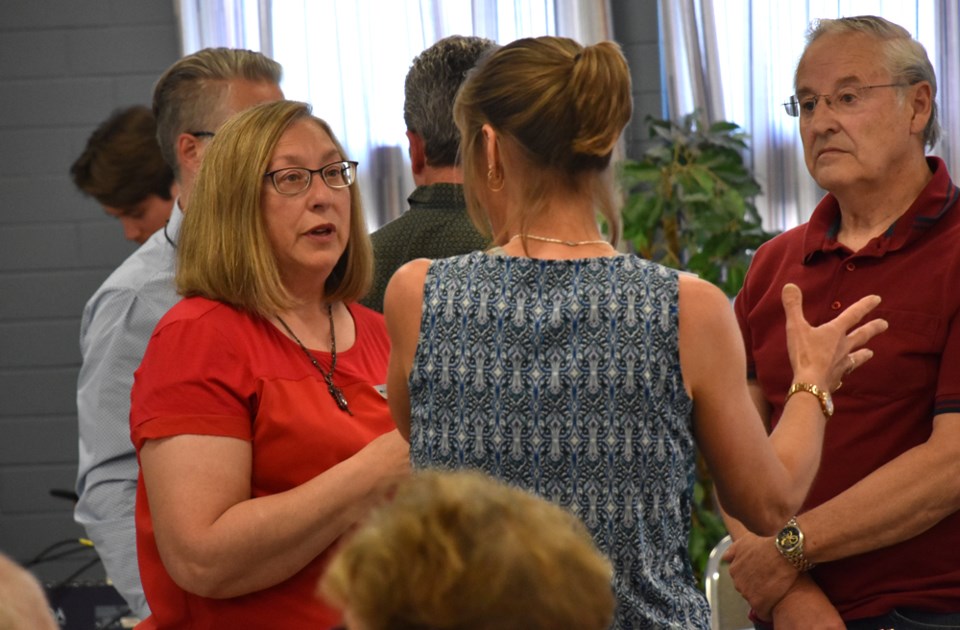Sechelt director Darnelda Siegers made a push for more resources to be funnelled into the existing water meter program on the Sunshine Coast to capture more data about water use and leaks.
The move came following an in-depth update on the Coast’s drinking water situation at last Thursday’s Sunshine Coast Regional District (SCRD) infrastructure committee meeting.
While Environment Canada is predicting hotter and dryer weather for the rest of the summer, infrastructure services general manager Remko Rosenboom told directors that the SCRD is in a better position, water-wise, than it was earlier this spring, when drought conditions compelled the infrastructure department to look at emergency options in case of a serious water shortage.
During the discussion, Gibsons director Bill Beamish asked how many new water services were expected to go online in the next two to three years. Rosenboom responded that fixing water leaks is a much higher priority. “If we can solve them we can free so much more space for day-to-day development,” Rosenboom told directors.
The response prompted director Siegers to ask Rosenboom about the current capacity of the water metering program. “Do we actually have the infrastructure, the software, whatever it is that’s needed in order to do that and gather the information to help inform some of the decisions?”
Rosenboom replied that leaks are detected through the meters, but that they don’t have sufficient resources to conduct frequent meter reads and analyze data to identify higher users. “Until we have meters in place all over the Coast in our service areas, we also don’t feel it is fair to treat the metered areas differently than unmetered areas… for compliance purposes.”
Siegers said compliance aside, more analysis could provide more granular information about commercial and residential users, among other things, and after more discussion, made a motion for staff to bring a budget proposal forward for a more comprehensive metering program, which could also include an online service that would allow those with meters to check their water use. It passed unanimously.
The District of Sechelt does not yet have meters installed, and the SCRD is still studying ways to pay for those installations.
Rosenboom also gave an update on the short-term initiatives to increase the water supply for this summer, including adding Trout Lake as a water source, seeking permission to reduce the required environmental flow rate for Chapman Creek, and increasing supply from Grey Creek.
With the revised outlook on water scarcity, Rosenboom said the Trout Lake would no longer be pursued. Grey Creek, however, is expected to be added to the water supply shortly, since it has received approval from Vancouver Coastal Health.
Discussions are ongoing with the ministry of natural resources and the Department of Fisheries and Oceans (DFO) to establish whether it is possible to reduce the flow rate for Chapman Creek, though if approved, the change won’t likely happen until next year, said Rosenboom, since salmon migration is expected to start in early August, which would be the “trigger” to return to the mandated 200 litres per second.
Roberts Creek director Andreas Tize said reducing the environmental flow rate is “probably our lowest hanging fruit in terms of being able to save the most amount of water and spending the least amount of money,” and asked whether more advocacy could be pursued. Rosenboom said a meeting with FLNRORD Minister Doug Donaldson is expected in September at the Union of BC Municipalities, which will allow directors to tackle “all water sustainability issues” on the table.
Directors also voted to move ahead with a public consultation process for the drought management plan to take place in the fall, which could include an online portion and in-person events in Sechelt and Gibsons.



